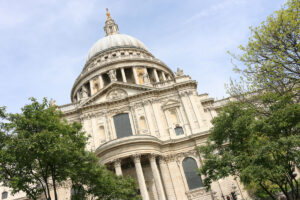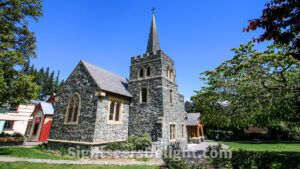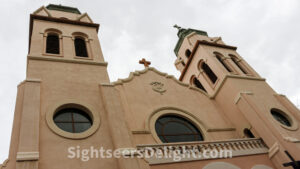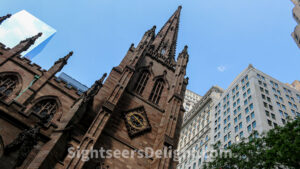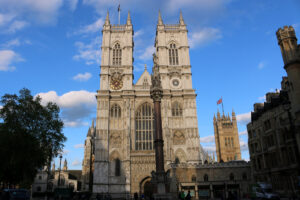St Paul’s Cathedral, the mother church of the Diocese of London, is the seat of the Bishop of London. The original church was consecrated in 1300; the current church was consecrated in 1697. The 365-foot-tall edifice was the tallest building in London from 1710 to 1967, and its dome is among the highest in the world. It is the second-largest church building in area in the United Kingdom. Over the years, St Paul’s Cathedral has hosted several high-profile events, including the 1981 wedding of Prince Charles and Lady Diana Spencer and jubilee celebrations for Queen Victoria.
St. Peter’s was designed by an architect from Dunedin using Gothic details, but built along the lines of an English parish church. Anglican roots in Queenstown, however, date to at least 1861. An earlier church was built in 1863 and modified over the years. The oft-photographed stone church, which almost seems out of place in adreneline-driven modern Queenstown, seats 130 people.
The Church of the Immaculate Conception of the Blessed Virgin Mary, also called St. Mary’s Basilica, is the oldest Catholic parish and the second oldest church in Phoenix. Between 1872 and 1881, Catholic priests from Florence, Arizona, would travel by buggy every three months to perform the liturgy. The building was constructed between 1902 and 1914, blending the Mission Revival and Spanish Colonial Revival architectural styles. It was officially dedicated in 1915 and replaced an earlier adobe church built in 1881 when the parish was founded. Starting in 1895, Franciscan Friars staffed the parish. Until 1924, it was the only Catholic parish in Phoenix. On September 6, 1976, the Arizona Historical Society named St. Mary’s an historic site. About a decade later, in 1985, Pope John Paul II elevated the church to a minor basilica.
85004
The historic Trinity Church is a parish church in the Episcopal Diocese of New York and located near the intersection of Wall Street and Broadway in Manhattan. The first Trinity Church was built on Wall Street in 1698 and faced the Hudson River. The building was destroyed in the Great Fire of 1776 during the Revolutionary War. In 1790, the second Trinity Church was completed and faced Wall Street. It featured a 200-foot-tall steeple. The third and current Trinity Church was built between 1839 and 1846.
10006
The Collegiate Church of St Peter at Westminster, better known as Westminster Abbey, was built in the 10th century. British monarchs have held their coronations at Westminster Abbey since 1066. Among the artifacts on display is King Edward’s Chair (or St Edward’s Chair), the throne on which English and British sovereigns have been seated when crowned and has been used at every coronation since 1308. The Abbey has been the site of at least 16 royal weddings since King Henry I married Matilda of Scotland on Nov. 11, 1100.
The shrine was created to honor the spirits — or “kami” in Japanese — of the soldiers who died in the Boshin War of 1868-9. Soldiers who fought and died in subsequent wars until World War II have been enshrined here. However, no one who died in combat since the Second World War has been enshrined. To date, 1,068 people who were convicted of some classification of a war crime have been enshrined here; 14 are so-called “Class A” war criminals, making it one of the more controversial places to visit.

